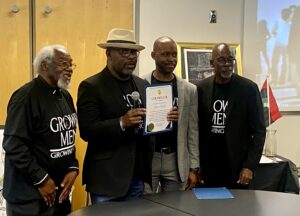Study Reveals Black Men Over 51 Are Dying from Drug Overdoses at 15 Times the Rate of White Men

By Vicent Willams
A startling new study has uncovered a grave and growing public health crisis: Black men over the age of 51 are dying from drug overdoses at a rate 15 times higher than their white counterparts. The findings, published by a team of researchers at the National Institute on Drug Abuse (NIDA), highlight a deep and troubling racial disparity in overdose fatalities among older adults, with the numbers painting a picture of a much-needed conversation about race, substance abuse, and healthcare inequalities.
A Stark and Growing Disparity
The study, which analyzed drug overdose death rates from 2015 to 2021, reveals a staggering trend: while drug overdose deaths have been rising across all demographics in the U.S., the rate for Black men aged 51 and older has skyrocketed in recent years. In 2021, for example, the rate of overdose deaths in this group was 15 times higher than in their white counterparts. The overwhelming majority of these deaths are linked to opioids, particularly fentanyl—a potent synthetic opioid responsible for the bulk of overdose fatalities nationwide.
The sharp contrast between Black and white men in this age group is not an isolated incident but part of a larger, systemic issue involving access to healthcare, addiction treatment, social determinants of health, and racial stigma.
The Roots of the Crisis
Experts suggest that the disparities observed in this study are not just about drug use but are symptomatic of deeper, entrenched inequities in American society. Historically, Black communities have faced barriers to accessing healthcare, including addiction treatment services, mental health care, and social services. These barriers have often led to untreated mental health issues, underdiagnosis of substance use disorders, and a lack of adequate medical interventions, all of which contribute to higher overdose deaths.
In addition to systemic racism in healthcare, many Black men face a higher likelihood of exposure to opioid-related substances due to socioeconomic factors such as unemployment, economic instability, and housing insecurity. The increasing presence of fentanyl on the streets is particularly dangerous, as it is often mixed with other drugs—sometimes without users’ knowledge—leading to an increased risk of fatal overdose.
“The combination of poverty, lack of treatment resources, and racial disparities in healthcare access means that Black men, particularly those over 50, have fewer opportunities to seek help for addiction,” says Dr. Linda Taylor, a public health expert and one of the study’s lead authors. “This age group is also often overlooked when it comes to targeted prevention strategies, which has only worsened the situation.”
Rising Concern Amid the Opioid Crisis
The opioid epidemic, which has gripped the U.S. for nearly two decades, has hit Black communities hard, but its impact has often been overshadowed by the more visible effects on
white populations. However, as this new study suggests, the crisis is far more devastating than previously acknowledged, with older Black men now experiencing a disproportionate share of the fallout.
One contributing factor is the availability of fentanyl, which has flooded both urban and rural areas, often disproportionately affecting Black communities. Fentanyl’s potency has made it one of the deadliest substances in circulation today, with overdose deaths skyrocketing as a result. Many Black men in the study, some of whom were previously stable and employed, found themselves in the grip of addiction, unable to escape the deadly cycle.
A Call for Targeted Intervention
The overwhelming nature of this crisis calls for immediate and focused intervention. Public health experts stress that solutions must be multifaceted and community-centered, including policies that address the root causes of substance abuse, like poverty, lack of education, and social dislocation.
Additionally, improving access to addiction treatment and harm reduction programs, such as needle exchange programs and the distribution of naloxone (a medication that can reverse opioid overdoses), could save lives. But experts agree that such efforts need to be specifically tailored to Black men over the age of 50, a group that is often underserved by current addiction treatment services.
“The opioid crisis has been viewed largely through a lens of younger individuals, but this study shows that older Black men are being left behind in the narrative,” says Dr. Charles Williams, a sociologist who focuses on race and health disparities. “We need to rethink our approach to addiction, ensuring that it is inclusive and addresses the unique needs of older populations, especially those in communities of color.”
The Road Ahead

In the wake of the study’s release, public health officials are calling for increased investment in culturally competent addiction treatment services, as well as broader efforts to combat the structural inequities that have contributed to the disproportionate impact on Black men.
Moreover, policymakers are urged to consider the implementation of targeted educational campaigns and outreach efforts aimed at older Black men who may not perceive themselves as being at risk for addiction, or who may feel alienated from existing services.
While the study’s findings are sobering, they also serve as a catalyst for change. By shining a light on this urgent issue, the hope is that solutions can be put into place to reverse the trend and provide older Black men with the support they need to survive and thrive.
As this new data begins to inform public health policy, the hope is that no more lives will be lost in the shadows of a crisis that has long been overlooked. The time for action is now.
Resources for Support
If you or someone you know is struggling with substance use, help is available. Contact the National Helpline for Substance Abuse and Mental Health Services at 1-800-662-HELP or visit SAMHSA.gov for more resources.

